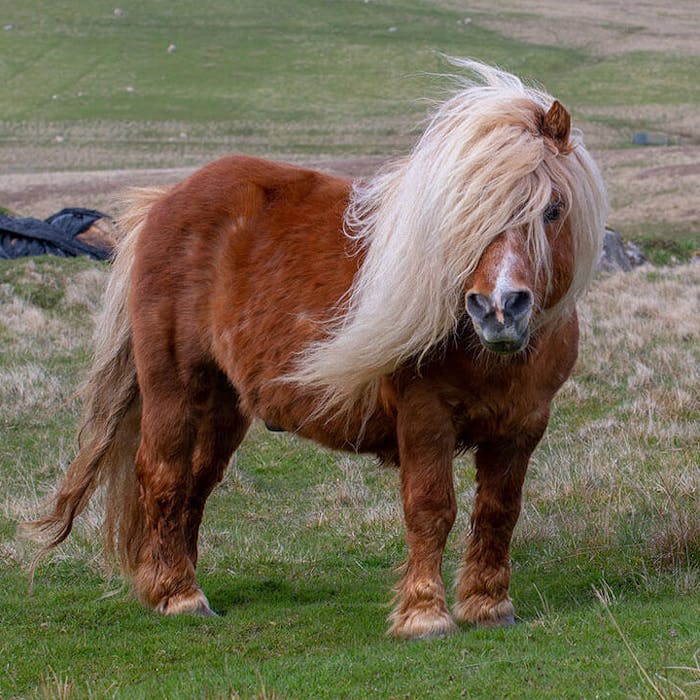
The Shetland Pony - a sturdy survivor and stalwart of the pits
The Shetland pony is a hardy breed from the Shetland Isles, off Scotland’s north-east coast. It is the smallest breed of pony found in Britain, standing up to 107 cm at the withers. It has a heavy coat and short legs, is strong for its size, and is used for riding, driving, and pack purposes. For a period, the Shetlands played a key role in the British coal industry as 'pit ponies'.
Small horses have existed in Shetland for more than 2,000 years, with archaeological excavations on the islands revealing bones of Bronze age equids. Horses probably reached the Shetlands by travelling across the icefields between the mainland, and were later crossed with stock brought by Norse settlers.
The breed was further influenced by the Celtic pony, brought to the islands between 2000 and 1000 BC. Because of their isolation, the Shetland pony developed without much influence from more modern breeds, and they were notable for the hardiness and longevity. Quality feed was hard to come by on the islands, and the winters were long and harsh. Only the toughest and most resourceful ponies survived. Shetlanders used the ponies for transport and for pulling carts and carrying peat and coal around the islands.
The ponies were introduced to mainland Britain during the mid-19th century. This was the time of the industrial revolution, when the need to transport coal increased dramatically, and in 1847, a law was passed that banned women and children from being used to haul coal out of the pits. Miners turned to Shetland ponies, and thousands were imported to the mainland to be pit ponies. They were suitably strong — a Shetland can haul twice its weight, while a draught horse can haul half its weight at most — and small enough to pass through low underground tunnels. Some were even transported to the eastern United States to work as pit ponies there. The animals spent most of their lives underground and often did not live very long.
Up to the end of the 19th century, the ponies were living semi-feral in the Shetlands, and simply rounded up for commercial use, but around 1880, studs appeared in the islands.
Today, the ponies are still fairly free range on the Shetland Isles, and are also popular around the world, as they are relatively cheap to keep. They are intelligent ponies, and some miniature Shetland ponies have been trained in America as guide horses for the blind.
Further reading
Links to external websites are not maintained by Bite Sized Britain. They are provided to give users access to additional information. Bite Sized Britain is not responsible for the content of these external websites.
